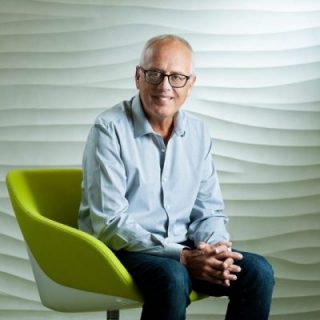
An information technology review in this global company looked impossible to act on. But the arrival of an interim chief information officer (CIO) made all the difference.
A business that truly understands the value of interim executives is a rare thing. An exception is Belron, a client of Holdsway’s Nick Diprose since 2008. This global, £multi-billion revenue
vehicle glass repair and replacement business has hired multiple interims to run projects spanning finance to information and communications technology (ICT).
So when its CIO left at short notice, Belron chief executive Gary Lubner moved fast to plug the gap with an interim leader from Holdsway’s trusted network.
Among the three people Holdsway proposed was Paul Hobbs, a seasoned executive with extensive experience from CIO roles in several large public and private sector organisations.
Surprisingly, Belron already had a highly-qualified interim working in this business function in the shape of Phil Pavitt. Pavitt had reviewed Belron’s use of ICT across its top ten countries and was recommending significant change to the board.
“Belron’s success over many decades is largely down to a great empowerment culture. It’s a franchised business model with 39 country leaders who have high autonomy. But in 2017 we realised the benefits of this had become outweighed by disadvantages in certain functions such as finance, HR and ICT,” he explains.

“Belron had about 300 different platforms in use and it probably needed just 20 or so. I saw that a new, co-ordinated approach in these key functions would be beneficial.”
Prioritisation
But it would be a very different approach. The existing CIO felt unable to support the plan and decided to move on. The US general manager could clearly see the benefits and
wanted to proceed. But because the US represents half of Belron’s global business, it required Pavitt’s full-time focus. It was this situation that triggered the need for Hobbs.
“Paul’s role covered the CIO leadership gap. Hiring for the permanent position turned out to be harder than we thought,” says Pavitt.
“I expected to finish my US project and leave Belron. But events turned out otherwise. As well as the holding role, Paul did a great job preparing the ground for the full, business-wide
transformation that I’m now running.
Pavitt met Hobbs at a second interview round and was impressed
“I felt he was a safe and steady character. He had the big company track record we needed to lend credibility. But also, a measured, reflective and collegiate style.
Starting in December 2018, Paul Hobbs’ role had two, distinct phases over 18 months. For the first nine months, he reported to Richard Tyler, who leads Belron’s global operations from the UK.
Building a collaborative culture
“My task was keeping the ICT agenda moving forward. At the same time, plugging the global leadership void for the 300 people working in ICT outside North America. There was also a small headquarters team to manage,” Hobbs explains.
“While Phil worked in the US, I introduced the remaining national ICT leads to one another. I began with the UK, France and Germany, which represent 35 percent of Belron Group. Then Spain, Italy, Australia, Belgium and Holland, which together represent 10 percent. I established relationships so we could all work together. Most had never met before. They had no awareness of other countries’ ICT architecture or ways of working.”
Hobbs also had to identify and stop localised expenditure, where appropriate. It made no sense to continue anything up for replacement by multinational platforms. Success hinged on
getting everyone to accept the new strategy. He had to paint a vivid and attractive ‘bigger picture’.
“You can’t drive change with appeals to logic; you have to win hearts as well as minds. People had to believe that the desired change would be good for them. Not only for Belron Group but for them individually too,” he adds.
Different cultural norms complicated the challenge. But Hobbs’ previous experience meant he already had the necessary cultural awareness and sensitivity.
“One of the first things we did together was a presentation to Belron’s European Board. The ICT leads for the UK, France and Germany got valuable personal board exposure as a
result. This was the primer for Europe-wide collaboration. Later, we created a European ICT governance forum. Then held a worldwide conference to embed collaborative working.
Pavitt says Paul Hobbs’ leadership in this phase was exemplary:
“There was a risk of it happening, but no countries fell out and no country declared independence. We saw huge collaboration between Germany and France, Spain and the UK, which was all Paul’s work. We ran projects that we would never have started without his leadership,” he acknowledges.
Building on initial success
The end of this phase saw Pavitt hired permanently. He was now on Belron’s board as global technology and transformation officer. Hobbs switched reporting line to Pavitt to start phase two of his assignment.
In other circumstances, this might have been awkward: two peer group interims with similar backgrounds where one is now the other’s client. But not in this case.
“An interim executive checks their ego at the door and puts aside personal career ambitions. My focus was on the project and supporting Phil. I think it helps being an ex-rugby player. You learn to do what’s best for the team, regardless of the position you’re asked to play.”
Pavitt asked Hobbs to continue managing the central ICT team and lead some group-wide initiatives. One of these was on ICT spend benchmarking.
“None of this work was about cost-saving but that particular project is now on track to save us about six percent of Belron’s annual IT budget,” states Pavitt.
A different project involved building a technicians’ App to improve operational efficiency and customer satisfaction. This was another example of Hobbs’ skill in driving collaboration and consensus among the different countries.
“Interims bring neutrality, an outsider’s view and detachment from company politics. I think these factors combined explain why interims get difficult jobs done quickly and effectively,” says Hobbs.
The new App provides fitting instructions and product information on over a million parts. It automates workflows and allows the correct part to be supplied and fitted at the right depot or mobile unit. Building it was complicated by the fact that many vehicle models don’t share identical parts, explains Hobbs:

“A BMW 5 series, for example, has 35 different windscreen variations, including glass tint, heating elements and all the different sensors modern vehicles have. The new App helps Belron minimise errors and improve customer satisfaction.”
Paul Hobbs’ time at Belron is about more than successfully delivering individual projects, however. It also led to a cumulative effect, against a disorderly backdrop, Pavitt points out:
“There is always a certain amount of chaos when a large team suddenly lacks leadership. Paul dealt calmly with the situation he inherited and quicklyintroduced order. It was a very smooth transition.
“Before his arrival, ICT governance appeared in big capital letters on the company risk radar. When he left us, it was under better management. For me, that sums up Paul’s most important contribution in a nutshell,” he concludes.
To hire an interim executive or to find out more about interim management please visit www.holdsway.co.uk/get-in-touch or contact Nick Diprose:
Tel: +44(0)20 3053 4438 • Email: nick.diprose@holdsway.co.uk
• Be very specific about what you do and don’t want the interim executive to do
• But be prepared to flex once they have arrived and assessed the situation. As an outsider, they can see things you can’t on the inside
• Give them the authority they need and position their role as an expert
• Look beyond the interim’s testimonials and technical ability to check they will be a good cultural fit for your business.
Talk to others – it’s easier than ever to find people who’ve worked in the same organisations.